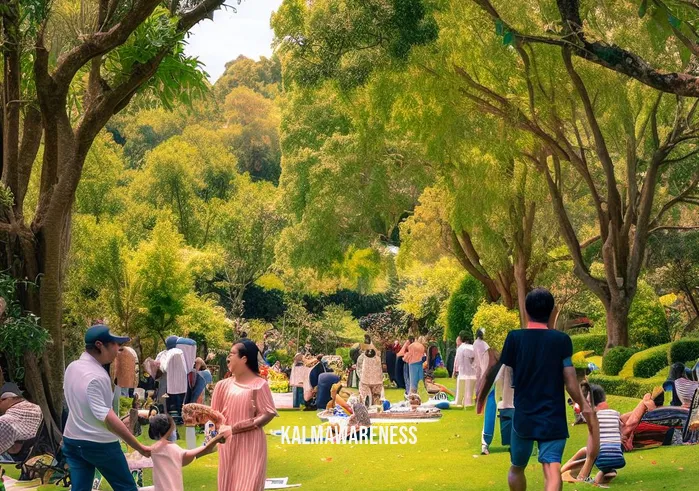The Art of Silent Movement: A Gateway to Mindful Living
Have you ever wondered how some people seem to glide through life with a quiet grace, barely making a sound? That’s what we’re going to explore here – the concept of moving quiet. It’s more than just tip-toeing around; it’s about a mindful approach to our actions and interactions.
Why Embrace Silence in Movement?
Imagine moving in a way that allows you to be fully present in each moment, attuned to your surroundings and your inner self. This is the essence of moving quiet. It’s a skill that combines physical agility with mental tranquility, enabling you to navigate through life with minimal disturbance, much like a gentle breeze that leaves no trace.
The Physical Aspect: Graceful and Controlled Movement
Moving quiet starts with the physical aspect – mastering your body’s movements to be as smooth and controlled as possible. It’s akin to a mindful martial art, where every motion is deliberate and purposeful. Whether you’re walking, running, or simply standing, being aware of your body’s mechanics can transform your movements into a seamless flow.
The Mental Aspect: Mindfulness in Motion
But moving quiet isn’t just about physical dexterity. It’s equally about mental composure. Practicing mindfulness, like those taught in ancient African meditation techniques, can cultivate a state of calm awareness. This mental tranquility allows you to move with intention, fully engaged in the present moment, as you navigate through your day.
Integrating Mindful Movement into Daily Life
- Start with Awareness: Begin by observing your current movement habits. Notice when you rush, when you’re clumsy, or when you’re not fully present. This awareness is the first step towards change.
- Slow Down: Try slowing down your movements. It’s amazing how much more you can notice when you’re not in a hurry. Slowing down helps in reducing noise, both physically and mentally.
- Practice Mindfulness: Incorporate mindfulness practices into your daily routine. Whether it’s through meditation in motion or simply being mindful while doing everyday tasks, the key is to be present and focused.
The Benefits of Moving Quiet
Embracing the practice of moving quiet brings numerous benefits. It enhances your physical agility, making you more adept at navigating your physical world. On a mental level, it fosters a sense of calm and control, reducing stress and anxiety. And socially, it allows you to be a more considerate and observant presence, improving your interactions with others.
Conclusion: A Step Towards a Mindful Life
Moving quiet is not just about being silent; it’s about moving through life with a mindful presence. It’s a journey of continuous learning and practice, and each step is as important as the destination. As you begin to master this art, you’ll find yourself more attuned to life’s subtle rhythms, more connected with your environment, and more at peace with yourself.
So, what might be the first small, silent step you can take on this journey? How can moving quiet transform not just how you move, but how you live? Stay tuned for more insights in the next section, where we’ll delve deeper into the practical applications of this serene art.

Mastering the Whisper of Movement: Delving Deeper
As we continue our exploration into the art of moving quietly, it’s essential to delve deeper into the nuances that transform this practice from a mere physical technique to a holistic lifestyle choice. Building on our initial understanding, let’s uncover more layers of this serene art.
The Subtlety of Silent Steps
Perfecting the Physical Technique
The journey to move quiet begins with refining our physical movements. It’s about creating a gentle harmony between our actions and the environment. This involves a meticulous calibration of our bodily motions to ensure they are smooth, controlled, and, most importantly, intentional.
- Focus on Footwork: Practice walking where your feet barely make a sound. It’s not just about being light-footed; it’s about being mindful of each step.
- Grace in Gesture: Every gesture should be deliberate and fluid. Whether it’s the simple act of reaching for a door handle or picking up a glass, make it a dance of finesse and precision.
Enhancing Mindful Awareness
Moving quiet is not just a physical act; it’s a mental discipline. It requires a heightened sense of awareness, where your mind is fully attuned to your body and surroundings. Mindful muscle techniques can be instrumental in cultivating this connection.
- Moment-to-Moment Awareness: Be aware of your movements and their impact on the environment. Notice the sound, the feel, and the effect of each motion.
- Breath as an Anchor: Use your breath as a guide to maintain a calm and steady rhythm in your movements.
The Ripple Effect of Moving Quiet
Moving quietly has a profound impact not only on ourselves but also on those around us. It’s about creating a peaceful aura that radiates calmness and respect.
Table: Impact of Silent Movement
| Aspect | Description | Benefits |
|---|---|---|
| Personal | Greater self-awareness and control | Reduced stress, enhanced focus |
| Social | Non-disruptive presence | Improved relationships, increased empathy |
| Environmental | Harmonious interaction with surroundings | Mindful living, lesser ecological impact |
Integrating Silent Movement in Daily Life
Mindful Practices for Everyday
- Start Small: Begin with simple tasks like walking or routine chores. Make a conscious effort to perform these with minimal noise and maximum awareness.
- Mindful Exercise: Incorporate silent movement principles in your physical exercises. Yoga and tai chi are excellent examples of mindful martial arts that blend movement with mindfulness.
The Challenges on the Path
Despite its numerous benefits, mastering the art of moving quietly is not without its challenges. It requires consistent practice and a mindful approach to overcome the habitual patterns of haste and noise.
- Overcoming Mental Barriers: The biggest challenge is often in our minds, breaking free from the habitual rush of daily life.
- Physical Limitations: Initially, it may feel unnatural or strenuous to move in such a controlled manner. Patience and persistence are key.
Preparing for a Deeper Dive
As we wrap up this section, it’s clear that the journey to move quiet is as much about internal transformation as it is about external expression. It’s a path that leads to a more mindful, serene, and aware existence.
So, how will embracing silent movement change your interaction with the world? What internal barriers might you face in this journey, and how can you overcome them? In our next section, we will explore the profound effects of mastering this art in our daily lives. Stay tuned for a deeper understanding of how moving quiet can elevate not just your presence but your entire way of living.

Embracing Silence as a Way of Life: The Journey Forward
As we conclude our exploration of “how to move quiet,” it’s essential to synthesize the insights gained and ponder their practical applications in daily life. This journey, as we’ve discovered, is about more than just physical stealth; it’s a holistic approach to living mindfully and harmoniously.
Transformative Power of Quiet Movement
Beyond Physical Grace: A Mindful Approach
The essence of moving quiet extends beyond physical grace into the realms of mental clarity and emotional serenity. This practice encourages a deeper connection with oneself and one’s surroundings, fostering a peaceful coexistence.
- Mindful Interactions: Applying the principles of silent movement in our interactions can lead to more thoughtful and compassionate communication.
- Self-awareness and Growth: The discipline required for moving quietly also promotes self-reflection and growth, as explored in resources like meditation for menopause and mindful hiking.
Practical Steps to Integrate Silent Movement
Cultivating a Quiet Presence
- Daily Mindfulness Practices: Incorporate mindfulness into everyday activities. Whether it’s eating, walking, or working, do it with full awareness and intention.
- Reflective Exercises: Regularly engage in exercises that promote reflection, such as journaling or micromeditating.
The Future of Moving Quiet
Looking ahead, the concept of moving quiet has the potential to transform various aspects of life and society. From creating more peaceful home environments to fostering a culture of respect and mindfulness in workplaces, the applications are vast and impactful.
- Workplace Tranquility: Imagine offices where movements and interactions are carried out with mindfulness, reducing stress and enhancing productivity.
- Community Harmony: Communities where residents are mindful of their presence and impact can foster a more harmonious and supportive environment.
Engage Further in the Art of Moving Quiet
A Call to Continuous Learning
- Explore deeper into this topic with resources like mindfulness books for teens and meditation stories for students.
- Consider attending a penn mindfulness class to deepen your practice.
Concluding Thoughts
As we wrap up this journey, let’s remember that moving quiet is a continuous practice, a commitment to living with intention and awareness. It’s about finding harmony in our actions, thoughts, and interactions.
Key Takeaways
- Moving quiet is a blend of physical grace and mental tranquility.
- It enhances self-awareness, improves relationships, and fosters a peaceful environment.
- Daily mindfulness practices are crucial in cultivating a quiet presence.
- The future applications of moving quiet in personal, professional, and community settings are profound and transformative.
- Continuous learning and practice are key to mastering this art.
In summary, “how to move quiet” is not just a skill; it’s a way of life. It’s about moving through the world with a sense of purpose, presence, and peace. As you continue on your journey, consider how this practice can transform not only how you move but also how you live.




